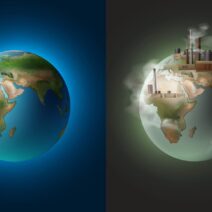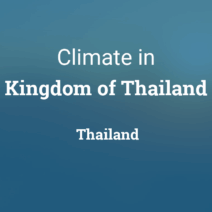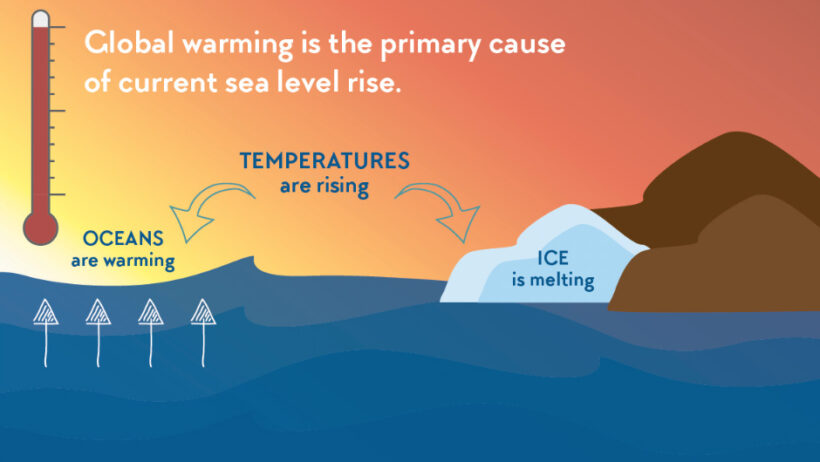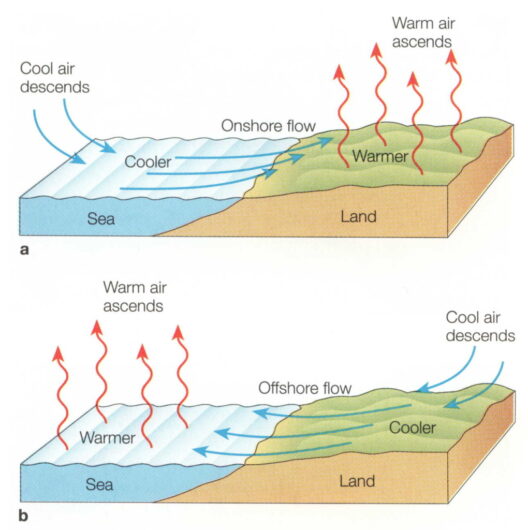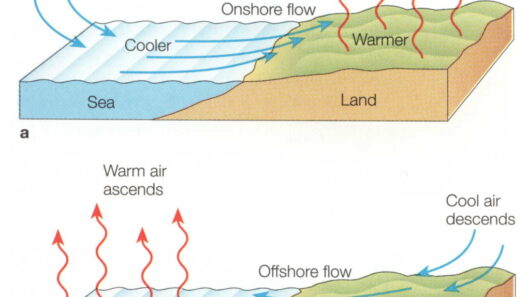As the planet continues to warm, the interconnected phenomena of rising seas and increasing temperatures are perhaps the most critical manifestations of climate change. The dual threat of higher sea levels and intensifying heat events requires a deeper understanding of their origins and ramifications. We often discuss climate change in abstract terms, yet it is vital to recognize how these environmental shifts will profoundly alter the human experience, address socio-economic factors, and ultimately, redefine our relationship with nature.
The initial understanding of sea level rise begins with the melting of ice sheets and glaciers, predominantly in Greenland and Antarctica. Global temperatures have markedly increased due to anthropogenic greenhouse gas emissions, leading to the thermal expansion of seawater—a lesser-known yet substantially impactful contributor to rising seas. The convergence of these factors has led to projections indicating a potential rise of several feet in global sea levels by the end of this century, creating a cause for alarm.
While the consequences of rising sea levels are extensively documented—coastal inundation, saltwater intrusion, and habitat degradation—the accompanying increase in ambient temperatures poses an equally significant threat, intertwining with the rise in sea levels in multifaceted ways. Warmer oceans not only contribute to higher sea levels but also exacerbate the frequency and intensity of extreme weather events. Hurricanes and tropical storms, for example, gain ferocity when they traverse warmer waters, leading to greater storm surge heights and subsequent flooding. The cyclical nature of these phenomena compels us to reevaluate our response strategies and legislative actions.
In examining the role of rising seas in climate change, one must consider the socio-economic implications that ripple throughout affected communities. Populations residing in low-lying coastal areas face existential threats that can render them climate refugees. As homes, infrastructure, and livelihoods are jeopardized, a cascading effect manifests. The displacement of communities can lead to increased socioeconomic disparities. Food security, accessibility to clean water, and the capacity for people to thrive are all jeopardized. Politically and socially, the ramifications are staggering as issues of equity emerge, demanding equitable solutions across socioeconomic spectra.
Furthermore, the intersectionality of rising tides and rising heat has profound implications on biodiversity. Coastal ecosystems, such as mangrove forests and coral reefs, serve as vital buffers against storm surges and contribute to carbon sequestration, yet they are highly susceptible to temperature fluctuations and saline intrusion. The degradation of these ecosystems not only diminishes their protective capabilities but also imperils countless species that depend on them for survival. An examination of the animal and plant species that thrive in these regions reveals interdependencies intricate enough to invoke alarm regarding potential biodiversity losses that could echo for generations.
In order to confront these challenges, a shift in perspective is imperative. The current narrative surrounding climate change often emphasizes individual responsibility and technological solutions. While these elements certainly play a role, it is crucial to adopt a holistic approach that encompasses systemic change. Governmental policies must reflect an understanding of the profound interplay between rising seas and heat, advocating for sustainable land-use practices, adaptive infrastructure, and community resilience plans.
Investment in green technology and renewable energy sources becomes paramount, enabling societies to mitigate their carbon footprints and transition towards sustainable living. Urban areas need to adopt smart planning initiatives that incorporate climate resilience by preserving natural systems, extending green spaces, and instituting stringent building codes that adapt to rising sea levels. Collaboration between scientific communities, policymakers, and local stakeholders will facilitate the development of comprehensive solutions, allowing for the innovative management of land and water resources.
Public engagement must complement these efforts. Educational initiatives aimed at fostering a deeper understanding of climate change and its vast implications can invigorate citizen involvement. Transparency in communication encourages communities to embrace proactive measures—whether it’s through advocating for policy changes or participating in community-driven climate action initiatives. This grassroots movement is not just pivotal for effecting change; it creates a culture of accountability and collective responsibility.
The pandemic of climate change fundamentally reshapes our lives, necessitating examination beyond the binaries of environment versus economy. The consequences of inaction are dire; however, an opportunity exists for humans to reshape their relationship with the planet. As cognitively aware stewards, we are tasked with uniting knowledge with action, transforming our understanding of rising seas and rising heat from abstract concepts into urgent calls for comprehensive societal change.
The dynamic relationship between rising seas and rising temperatures underlines the criticality of immediate and sustained adaptation measures. By embracing an integrated approach—one that advocates for equitable social structures, robust environmental policies, and innovative technologies—the complexities of climate change may not be insurmountable. Rather, they can be addressed head-on, sparking a renaissance of environmental stewardship that nourishes both humanity and the natural world. Only through collective endeavor and existential reexamination can we hope to mitigate the tide of change that currently threatens our planet.
